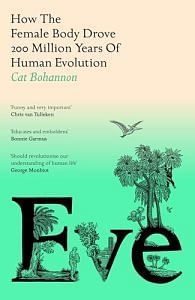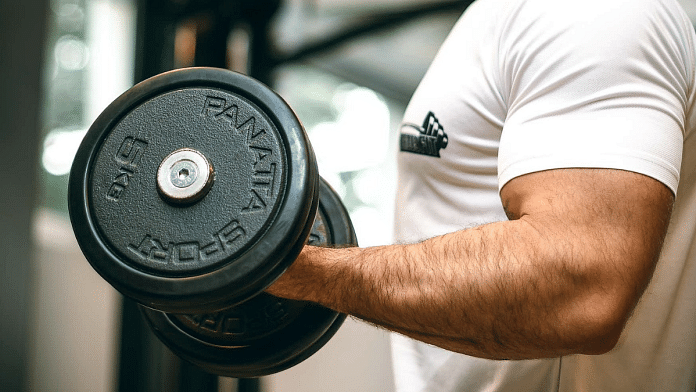Despite its obvious benefits, human women throughout history have mistakenly believed colostrum to be rotten milk, or what they called beestings. Some even avoided giving it to their babies. In the fifteenth century, Bartholomäus Metlinger wrote the first European textbook for pediatrics. Despite the German’s own lack of breasts, he didn’t hesitate to mansplain women’s milk and what to do with it:
The first 14 days it is better that another woman suckle the child as the milk of the mother of the child is not as healthy, and during this time the mother should have her breast sucked by a young wolf.
I can’t imagine where he thought each new mother would find a young wolf. But any recommendation that babies not be given colostrum as a matter of practice was, and is, dead wrong. A mammal’s lactation pattern— from thick, yellow, protein-heavy colostrum to thin, white, fat-heavy milk— is specially geared toward a newborn’s development. Timing is everything here. The four dangers— desiccation, predation, starvation, and disease— are differently dangerous according to a timetable. In a burrow, desiccation is the first danger, both for the eggs and for the newly hatched.
Starvation comes quite a bit later, since a body can always eat a bit of itself to survive.*
Predation is also a later problem, especially if the baby doesn’t need to leave its underground bassinet for a while. But disease is a big deal right off the bat. Colostrum doesn’t just boost the kid’s immune system by injecting antibodies; it’s also a reliable laxative, which is also crucial to building a baby’s immune system.
On top of the thick yellow stuff coming out of her nipples, a new human mother might also be startled by what’s coming out of her little darling’s behind. Meconium, a baby’s first poop—actually first few poops— is thick, tarry, and alarmingly green-black. It doesn’t smell like much, thankfully, because it’s mostly broken-down blood, protein, and fluid the fetus ingested inside the womb. But it’s important that the stuff comes out fairly soon,
and the laxative properties of colostrum help hurry that along—so well, in fact, that the intestines of a newborn drinking colostrum are wiped relatively clean. Which is precisely what needs to happen.
Before babies start to digest the food that will give them energy, they need to line their intestines with bacteria to help them break that food down. Mammals coevolved with their gut bacteria, because it takes a village.
Friendly bacteria— present in the mother’s milk, in her vagina, and on her skin— rapidly colonize a newborn’s intestines. Think of a new neighborhood: whatever group moves in first has a big influence on how the place evolves. Because of the relative lack of competition, those early bacterial colonies thrive, reproducing themselves all along the intestinal walls. Initial colonies in newborns’ guts also have ways of communicating with cells in the tissue of the intestine. Toll-like receptors learn, like a neighborhood watch, which types of bacteria should be catered to and which are dangerous. The earliest occupants have a profound influence over these receptors. That’s one reason why preemie babies in the NICU are usually given donated breast milk and concentrated colostrum if the hospital can get it: their immune systems can be dangerously compromised without it.
Colostrum doesn’t just clear the path for the early bacterial settlers. It also contains bacterial growth factors that help those colonies gain a foothold. A growing neighborhood might need a combination of public services and small-business loans, but for intestinal bacteria it’s a hot dose of 60- sialyllactose. That’s an oligosaccharide, one of the special milk sugars our breasts make for our babies. The early bacterial colonizers of newborn intestines—that is, Bifidobacterium, Clostridium, and E. coli (the good kind)—really like this stuff. It’s their nectar of the gods. It helps them not only grow and reproduce but develop complicated biofilms: connected colonies of bacteria that, instead of just loosely fl oating
around, adhere to the intestinal wall. Once they’ve set up shop, these bacteria help the newborn digest the milk their mothers are feeding them. What’s more, we’ve recently discovered that oligosaccharides themselves can help deter dangerous pathogens from adhering to intestinal walls. Unable to find a comfortable, noncompetitive spot, the unwelcome invaders drift through and eventually get pooped out.
And that’s one of the most surprising discoveries about breast milk. Just in the last decade or so, scientists have come to realize that maybe its nutritional value isn’t the biggest deal off the top. Milk is really about infrastructure. It’s city planning. Some combination of a police force, waste management, and civil engineers.
There’s one last point to make against the idea that mammals’ milk evolved mostly for nutrition. It turns out a significant portion of our milk isn’t even digestible.
Modern human milk is mostly water. Among the things that are not water— proteins, enzymes, lipids, sugars, bacteria, hormones, maternal immuno- cells, and minerals— one stands out. The 6ʹ-sialyllactose that colostrum delivers to newborn baby guts is not the only oligosaccharide in breast milk. In fact, the third- largest solid component of milk comprises oligosaccharides. These complex, milk- specifi c sugars aren’t even digestible by the
human body. We don’t use them. They’re not for us. They’re for our bacteria.
Oligosaccharides are prebiotics: material that promotes the growth and generally ensures the well- being of friendly bacteria in the intestines. Prebiotics also promote certain kinds of activities among these bacteria: for example, the sort of activity that annihilates unfriendly bacteria. Commensal digestive bacteria have a complex and irreplaceable role in your digestive and immune systems, the features of which we’re only starting to understand. But without prebiotics, they’re up shit creek without a paddle. (Prebiotics are not the probiotics you’ve likely heard of— bacteria like L. acidophilus that the human body naturally contains. Eating fistfuls of probiotics on their own is a little like planting your garden without fertilizer, or maybe even without soil. You need prebiotics to make the whole system work.)
These special milk sugars are the target of an entirely new industry in the United States: that of lab- processed, powdered, and/or concentrated human breast milk, drawn from women who are sometimes paid handsomely for their donations. Nonprofit milk banks don’t pay the mothers who donate their breast milk, because they see themselves as providing a service for patients who need such breast milk for medical reasons. These for- profit companies, on the other hand, dehydrate milk they’ve purchased from human mothers and then sell the product to hospitals, hoping to profi t from providing the extra hit of oligosaccharides preemies need to start their young lives. At a cost of up to $10,000 for a few short weeks, daily doses of concentrated human breast milk product can help these little patients gain weight and develop a mature immune system more quickly.*
Other biotech companies are trying to create human-type oligosaccharides on their own, eliminating the need for women’s breast milk. It’s unclear whether it will be more financially viable to create the sugars de novo or source them from paid donors or whether there’d even be a market for these sugars outside human infants. Scientists are feverishly trying to figure out whether they might be part of a medical treatment for patients with Crohn’s disease, IBS, diabetes, or obesity, for instance. But we simply don’t know if the adult microbiome would benefit from the same sorts of prebiotics that infant intestinal colonies do. Technically, the bacteria are the same bugs. But how they interact with infant intestinal walls, and how those walls help “teach” the infant’s immune system in a critical window of development, is at the cutting edge of current knowledge. We know that mammals’ milk coevolved with mammalian guts. We know our bacteria matter to our well-being. But precisely how and why and when? Ask again in twenty years.
Still, humans are not known for behaving rationally when it comes to our own bodies. Some bodybuilders, for example, currently buy human breast milk on the black market, erroneously believing it will help them build muscle—even though human breast milk has far less protein than cow’s milk and protein is what muscle tissue is primarily made of. If getting swole were the goal, it’d be far cheaper and more effective to buy and drink a quart of cow’s milk.
 This excerpt from ‘Eve’ by Cat Bohannon has been published with permission from Penguin India.
This excerpt from ‘Eve’ by Cat Bohannon has been published with permission from Penguin India.



